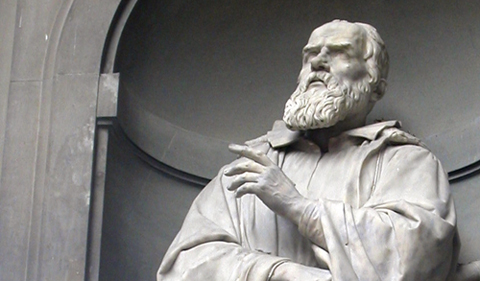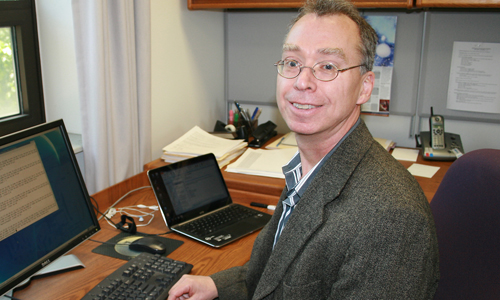Dr. Kenneth Hicks, Ohio University Professor of Physics, recently traveled to the University of Padua in Italy, where Galileo Galilei taught almost 400 years ago.
Hicks writes about seeing the hall where Galileo lectured in his Aug. 3 column “Italian trip reminds of Galileo’s many discoveries” in the Columbus Dispatch.
In his day, Galileo made revolutionary discoveries. He used a telescope to find craters on the moon, determine that Jupiter was a planet, and find the Milky Way made of individual stars.
“I found it interesting that he made considerable contributions to mathematics, physics (before Isaac Newton) and even medicine,” Hicks writes.
Such multi-disciplinary contributions to science are rare today. Professors are prone to developing a niche in their field of expertise and staying with that area of study for an entire career.
While it’s well-documented that many new discoveries have come from inter-disciplinary research, the nature of today’s universities is that research spanning two disciplines often is not rewarded by the academic system. Today, it’s publish or perish, and inter-disciplinary research typically is difficult to publish.
Even Galileo found it difficult to publish revolutionary ideas. Before his work with telescopes, he wrote a series of articles on the motion of objects under the influence of gravity. These were not published until near his death.
Why? The articles contradicted the teachings of the Greek philosopher Aristotle, which were considered essentially sacred by academics of the day. Galileo’s ideas were correct, but he must have thought twice before spurning Aristotle in print.




















Comments